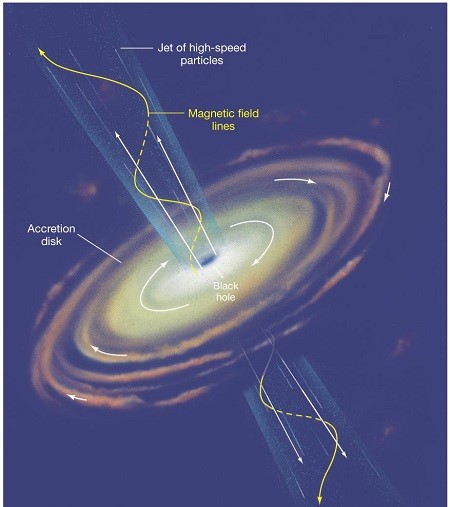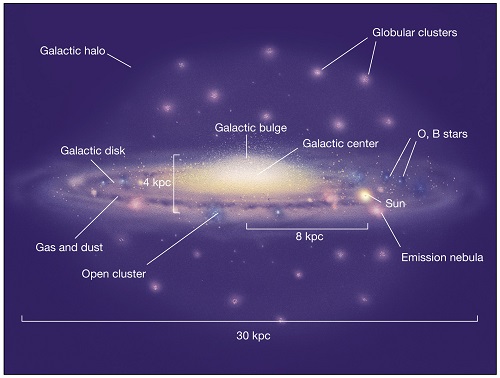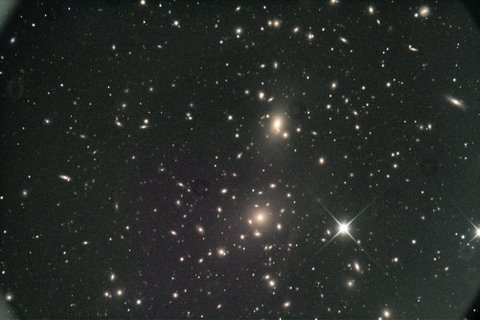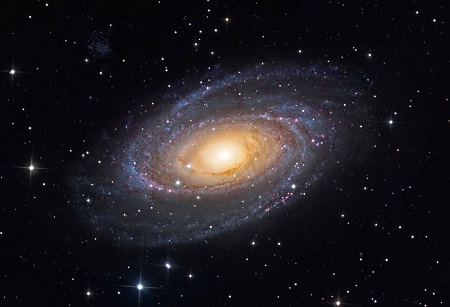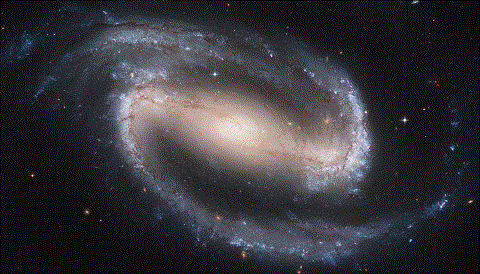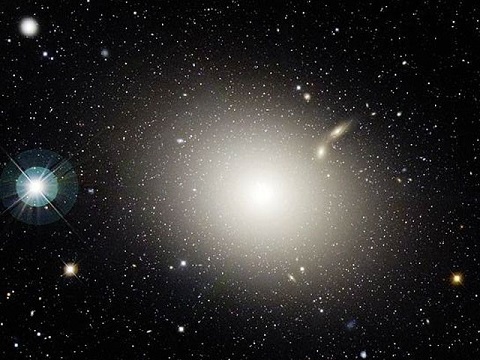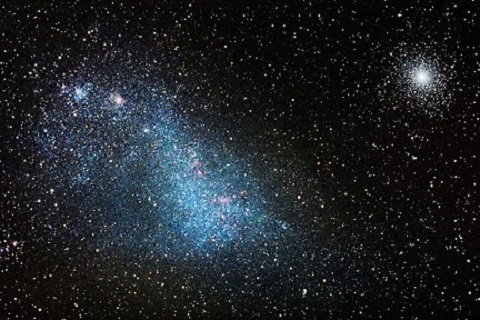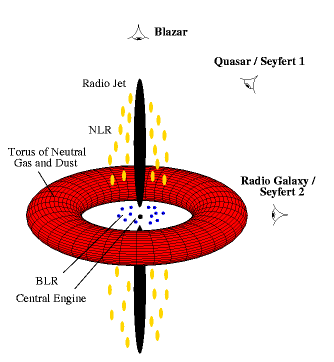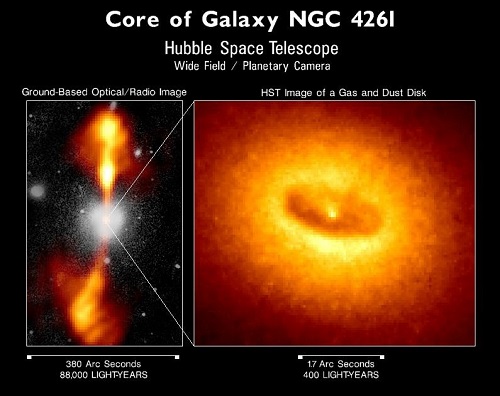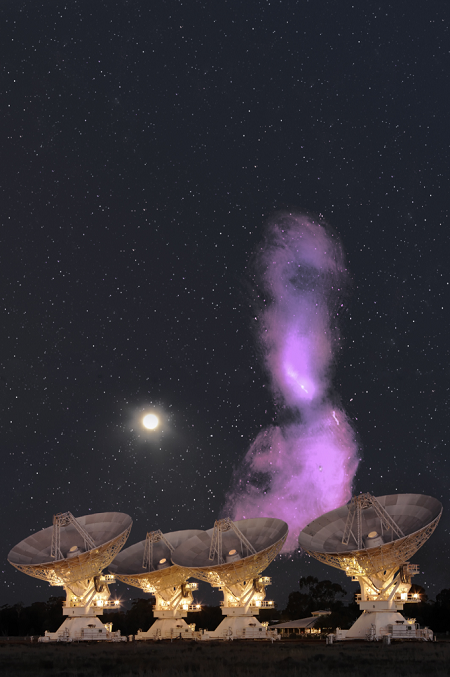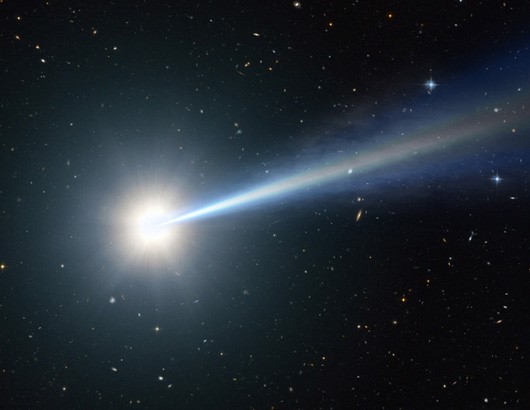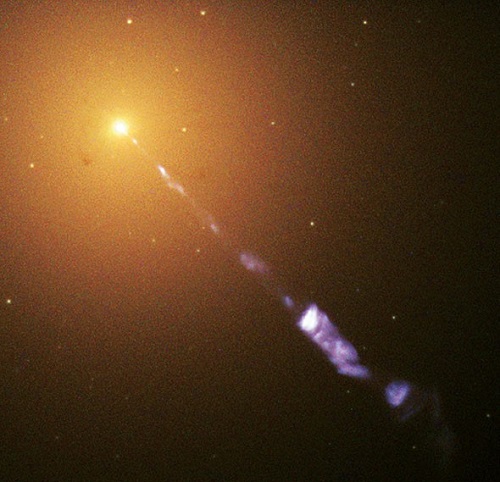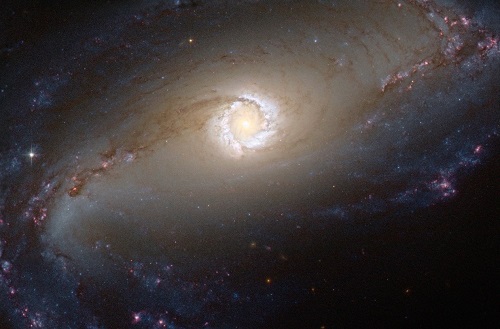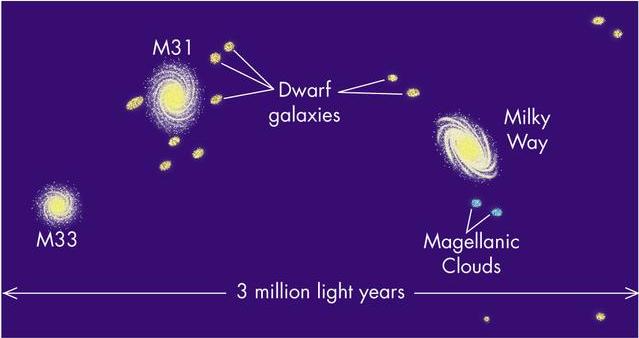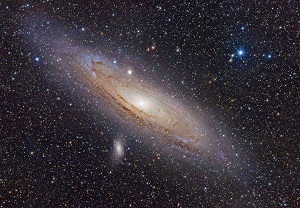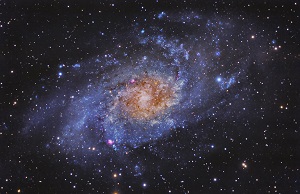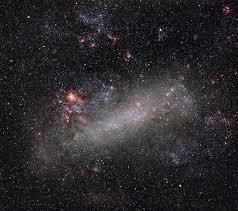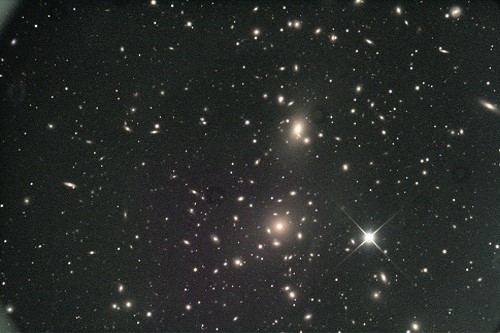Galaxies
The parts of any galaxy start with the central engine. This is referred to as either a black hole or plasmoid, depending on which model you ascribe to. The central engine includes the spinning disk around it. In the gravitational model, this is referred to as the accretion disk. Jets of plasma shoot out from poles of the central engine.
Outside of that are the closest stars, which are rotating around the central engine. All of this together is referred to as the core of the galaxy. Surrounding the core (or galactic center) is the area referred to as the nucleus, which appears as a central bulge. The arms of the galaxy extend out from the nucleus.
The galactic center, then, includes the central engine, the spinning disk around it, and the closest stars as well as the galactic bulge.
History: In ancient times, men looked up and saw the sun, moon and stars. There were "wandering stars" which were called planets, but they were all stars. Although Ptolemy, about 150 AD, put the Earth at the center of the solar system with seven planets ranged outward from it, it was not until Copernicus, in 1543, that observation and mathematics, put the Sun at the center, with the planets going around it. At this point in time, however, the planets were still considered stars -- stars that went around the Earth. That the sun itself was a very close star had been considered, and argued about, since the time of the Greeks. As mentioned in an article on Newton:
In the 17th century, with the invention of the telescope, it was Galileo who found that the planets were not stars. His observations confirmed that Copernicus' view of heliocentricity (the sun is the center and not the earth) was correct. At this point, though, everything outside our solar system was still considered to be stars. Gradually, as telescopes were improved, nebulas were spotted. By 1750, both gas clouds and nebulas had been seen. William Herschel found that some of the nebulas which were seen appeared to have a spiral shape, but there did not seem to be anything remarkable about that. In 1861, William and Margaret Huggins, using a spectroscope invented by Robert Bunsen, showed that the stars were actually suns. The Milky Way was thought to be the entire universe until early in the 20th century. In 1918 the size of our galaxy, and our place in it, was approximately established due to the work of Harlow Shapley.
Two years later, Hubble noted that there seemed to be collections of stars within the spiral nebulas. By 1924, he had measured the distances to these stars. These distances were at a strong variance with the concept of the Milky Way being the entire universe, especially considering its size as determined by Shapley. It was due to Hubble's work that it was acknowledged that there were other galaxies out there and they were given the name "island universes." Because our galaxy had been considered the universe, the others were considered individual universes, too. As time went on, and telescopes became larger and more sophisticated, we found that things that looked like stars were actually entire galaxies.
Eventually, we found that these galaxies, numbering in the billions, extended out to what appears to be the very edge of the universe. Each of them has billions of stars, the same way our Milky Way does. How did they find out these were galaxies? As they focused on each of the 'fuzzy' objects with a time-lapse photograph, what emerged was a nucleus with spiral arms around it. The arms contained billions of stars. It had already been determined in 1944, that Population II stars, with the red giants, were older than the Population I stars, which had the blue giants. Thus, when astronomers were examining the newfound galaxies, they noticed some appeared much redder than others. This led to the conclusion that the red galaxies were much older than the blue galaxies. Today this is not considered a hard and fast rule, but the fact that it was considered to be true not so long ago led to some very interesting discoveries. To understand the idea that there were two competing theories about galaxies, it is necessary to understand that, by the middle of the 20th century, there were two competing ideas regarding the universe itself. The first, and most ancient, was the 'steady state' model: the universe had always been the way it is seen today. This concept was formalized by Gold, Bondi, and Hoyle. Thus, in any one part of space you could see both old and young galaxies. In other words, ages and the distances of galaxies were not coordinated. They did modify the ancient idea by accepting the idea that the redshift of light from the distant galaxies, however, indicating the universe was expanding. The idea opposing the steady state model had been sparked by Einstein and carried forward by George Gamow and Ralph Alpher. They proposed that the universe had started as a very small bit of matter and suddenly expanded. Hoyle, ridiculing this idea of a rapid expansion, referred to it sarcastically as the "Big Bang," a moniker that has stuck. What is seen, regardless of models, are galaxies that are apart from our Milky Way, some being large, some small, and some at incredibly great distances. Distribution of Galaxies: Galaxies are not randomly scattered throughout the universe. They occur in groups, but as we look out, these groups actually appear to line up.
Although the above illustration is plotting galaxies at a medium distance (about 550 million light years away; the "0" in the lower left hand corner is where we are) from us, this filamentary structure appears to be universal. Shapes of Galaxies: The main galaxy types are: Spirals, Ellipticals, Lenticular (cross between spiral and elliptical), and Irregular. Then there are those considered "peculiar" galaxies. Spirals are classified according to the size of the nucleus and the development of the arms. In the designations, the capital “S” stands for “spiral” and the alphabet letter after it (a, b, or c) indicates the size of the nucleus, which is related to how well the spiral arms are defined. Sa galaxies have the largest nuclei, but the most tightly wound spiral arms. Sb (M81)galaxies have medium sized nuclei with defined spiral arms. Sc spirals have a small nucleus with prominent arms. The Sombrero spiral galaxy, seen almost on edge below, is a type Sa with a prominent nucleus. The closely wound spiral arms can be seen on the right hand side of the disk.
A good example of an Sb galaxy is M81
Spiral galaxy M101 (Pinwheel) an Sc galaxy with small center and well-developed arms
Barred spiral galaxies, such as our Milky Way, have similar designations. They all start with a capital SB, meaning “barred spiral,” with a small letter designation following, again related to the size of the bar and the prominence of the arms.
Elliptical galaxies are classified according to how spherical they are, with E0 being completely spherical and E7 being the most flattened. Most ellipticals contain a similar number of stars as spirals, but spirals are flattened disks whereas elliptical are spherical or football shaped. Some elliptical galaxies can be small, but some, such as M87, below, can be of giant size compared with spirals. M87 has a halo of over 1000 globular clusters associated with it. They can be seen as dots that look like stars around the galaxy itself.
Lenticular galaxies are like flattened elliptical galaxies, with a central bulge that is somewhat separated from a surrounding disk. But the disk lacks any of the spiral structure. An example of this is NGC 2787, below:
Irregular galaxies: Usually smaller than spirals and elliptical galaxies, they are often satellites of large galaxies. The Magellanic Clouds are two small, irregular galaxies which are satellites of our Milky Way. They have no discernible structure. Below: Small Magellanic Cloud an irregular galaxy 220,000 light years distance. The object in the upper right corner of the image is the Globular Cluster 47 Tucanae, which is actually much closer to us at about 16,500 light years.
Peculiar Galaxies: By definition, a peculiar galaxy is one which either does not fit into the usual classifications or is abnormal in size, shape or composition. They are similar in size to regular spirals or elliptical and some feature jets coming from the nucleus. Peculiar galaxies are divided into two types: First interacting galaxies. Examples include Arp 272 (number 272 in Halton Arp’s Atlas of Peculiar Galaxies) shown below here where two spiral galaxies are interacting.
Another is Arp 142. The blue component at the top is a distorted spiral galaxy sometimes called “the Penguin” or “the Hummingbird” because of its shape. The white elliptical galaxy below it is associated with the distortion, and is sometimes called “the Egg”. The blue component is that color because of the intense burst of star formation (notably blue giants) that the interaction has produced.
A third example is Arp 238, a pair of interacting spiral galaxies. The interaction has united the two galaxies by a bridge of material and has formed two strongly curved tails of gas and young blue stars.
The second classification among Peculiar Galaxies is Active Galactic Nuclei (AGN). The AGN types are assigned to one or other of the following categories: Radio Galaxy, Blazar, Quasar, Seyfert Galaxy, Relativistic Jets. Later, it was discovered that most of the examples in these categories were Quasars viewed from different angles as shown below.
The initials BLR stand for the Broad Line Radio emissions that come from dense, fast moving ionized clouds.
These AGN are normal sized galaxies with a compact region at the galaxy center which is very luminous and active at a variety of wavelengths. Jets originate in a small region within the galaxy core. In contrast, the radio lobes often extend to huge distances beyond the galaxy. Here are some examples among many. This composite image of Centaurus A is complete with radio lobes (purple) and jets which are bright in X-rays. The dark bands around the center define an object similar in appearance and size to dusty spiral arms in a normal galaxy. Other features are similar to a giant elliptical. It is 13 million light years away and has a mass ten times that of the Milky Way.
If all the radio emissions were visible to the naked eye, Centaurus A would look like this in our skies with the full moon.
Radio Galaxy Hercules A below is actually a giant elliptical galaxy more than 1000 times as massive as the Milky Way. That elliptical is the bright fuzzy region in the center. The Jets of high energy plasma are visible in the radio region of the spectrum and also emit X-rays. They dwarf the galaxy itself since each jet extends about 1.5 million light years out from the core.
Typical Quasar is shown below
Blazar: the core and high-speed jet of hot plasma from the giant elliptical M87
Seyfert galaxies are always spiral galaxies with exceptionally bright cores radiating strongly at all wavelengths. This one is the core of NGC 1097 seen from an acute angle.
Galaxy Cores: There are two theories about what is in the middle of each galaxy. Both theories have to deal with the fact that objects close to the core are whirling around it at enormous speeds. Both theories have to deal with the fact that, once out of the core area, both the inner and outer arms of the associated galaxies are rotating around the cores at the same speed, quite unlike what we see in our solar system, where the farther out an object is, the longer it takes to orbit the sun. Both theories have to deal with the fact that jets of material are being ejected from these cores. Both theories also have to deal with the enormous amount of energy generated by quasars in such relatively small volumes. The first theory explains galaxy cores gravitationally and the second electromagnetically. Further discussion of these theories is best dealt with in the Explanations and Interpretations section. Galaxy Clusters: After Hubble had realized there were galaxies at a great distance from our own, it was thought that these "island universes" were isolated entities throughout the universe. Then it was discovered that galaxies were actually in clusters -- some large and some small. Our own Local Group of galaxies is one such cluster, but it is a relatively small one. For this reason -- because there are so few members in it -- it is called "poor." We only have about forty galaxies in the Local Group, spread over a distance of 3.5 million light years. Of these, there are only three spiral galaxies: the Milky Way, and Andromeda Galaxy (M31), and the Triangulum Galaxy (M33). The rest of the galaxies are small satellite galaxies: irregulars, dwarf ellipticals, and something we call dwarf spheroidal. This last group, the dwarf spheroidals, are too small to be seen in any other galaxy cluster.
Two of the Milky Way's satellite galaxies are the Large and Small Magellanic Clouds. The large is on the left and the small is on the right.
Unlike our small Local Group, a large galaxy cluster may have up to one thousand members. The Coma Cluster is one of these.
It was found that there are not only clusters of galaxies, but there are also clusters of clusters. These are called "super clusters." Our Local Group of Galaxies is part of the Virgo Supercluster.
As pointed out above, the entire structure of the universe is along filamentary lines.
|
